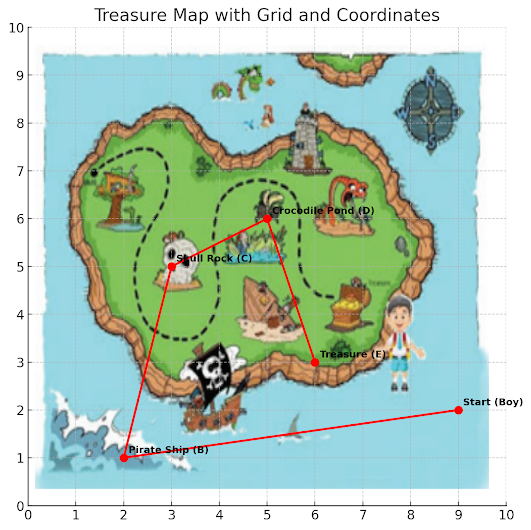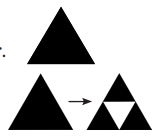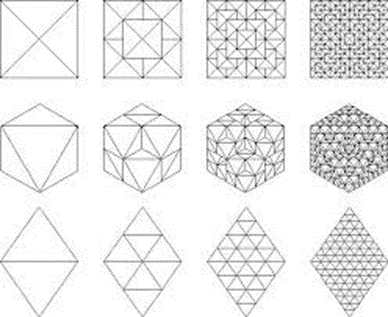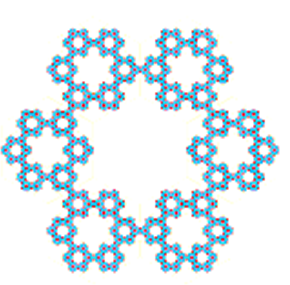Activity W 5.2 Number sense
Number sense involves giving meaning to numbers, that is, knowing
about how they relate to each other and their relative magnitudes.
Having a sense of number is vital for the understanding of numerical
aspects of the world.
Here are some ideas to develop and strengthen
students’ sense of numbers.
Activity 1: Two-Digit Number Trick
Objective: Discover a pattern when reversing and adding two-digit numbers.
Procedure
Ask the students to choose a two-digit number.
Tell them to reverse the digits to get a new number.
Add this new number to the original number.
Ask students to check for their divisibility by a number.
Check if every student gets a number by which the sum obtained in step 3 is divisible.
Discuss why this happens!
Steps:
Ask students to choose any two-digit number (e.g., 52).
Reverse the digits to form a new number (e.g., 25).
Add the original and reversed number (e.g., 52 + 25 = 77).
Ask students to check the divisibility of the result.
Challenge Question:
Answer: yes, The sum is always divisible by 11.
✨ Discover: The sum is always divisible by 11. Why does this happen?
Why does this happen?
Answer:
Let the two-digit number be 10a + b, where a is the tens digit and b is the units digit.
The reverse of the number is 10b + a.
Now add the two: (10a+b)+(10b+a)=11a+11b=11(a+b)
This sum is clearly divisible by 11, because 11 is a common factor.
Activity 2: Three-Digit Number Difference
Objective: Explore divisibility through subtraction of reversed numbers.
Procedure
Ask students to think of a three-digit number.
Now, they should make a new number by putting the digits in the
reverse order.
Subtract the smaller number from the larger one.
Ask the students to check by which number the difference so
obtained is divisible. Which other multiple of this divisor will
divide the difference?
Discuss how this happens!
Steps:
Choose any three-digit number (e.g., 741).
Reverse the digits (e.g., 147).
Subtract the smaller from the larger (e.g., 741 - 147 = 594).
Ask: Which number divides this difference?
Question: What is the difference divisible by?
Answer: The difference is always divisible by 99.
Follow-Up:
✨ Discover: The difference is always divisible by 99 (or sometimes 9 and 11).
Why does it work?
Let the number be 100a + 10b + c, and the reverse is 100c + 10b + a.
Now subtract the smaller from the larger:
(100a+10b+c)−(100c+10b+a)=99a−99c=99(a−c)
So the difference is always divisible by 99.
🧠 Bonus: Since 99 = 9 × 11, it's also divisible by 9 and 11.
Activity 3: Rotating Digits of a Three-Digit Number
Objective: Explore rotational patterns in digits and their divisibility.
Procedure
Students may be asked to think of any 3-digit number (abc).
Now, using this number, students may be asked to form two
more 3-digit numbers (cab, bca).
Now, add the three numbers so formed.
Students may explore the smallest number by which it will be
divisible.
Discuss how this happens!
Steps:
Think of a three-digit number (e.g., 231).
Create two more numbers by rotating the digits:
Add the three numbers:
Ask: What is the smallest number that always divides the sum?
Answer: The sum is always divisible by 37 (and also 3 and 9).
✨ Discover: The sum is divisible by 37 (and also 3 and 9)!
Why does it work?
Let the three-digit number be abc:
-
Its numerical value is 100a + 10b + c
-
Rotation 1 (cab): 100c + 10a + b
-
Rotation 2 (bca): 100b + 10c + a
Now add all three:
(100a+10b+c)+(100c+10a+b)+(100b+10c+a)=111a+111b+111c=111(a+b+c)
Since 111=3×37,the sum is divisible by 37,3, and 111.



















